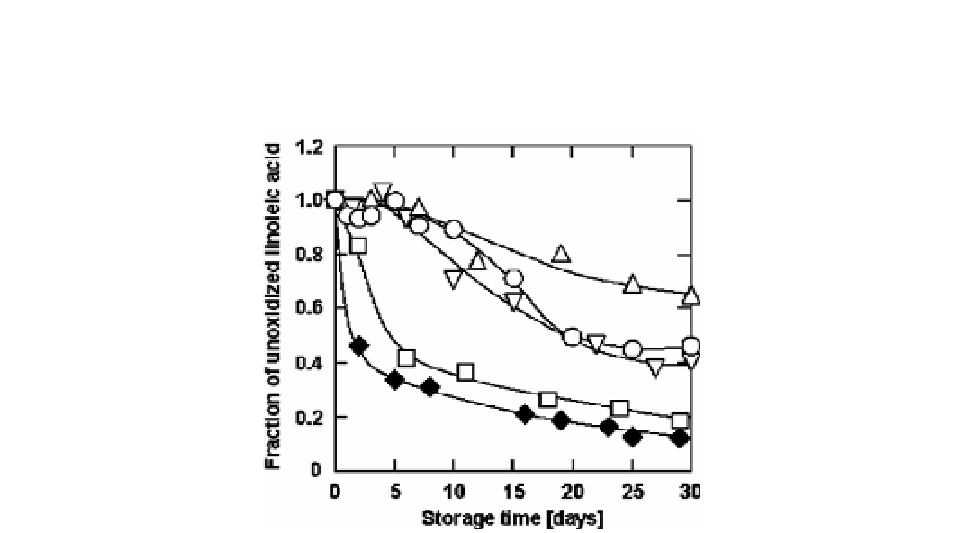Biomedical Engineering Reference
In-Depth Information
wall material layer. Some linoleic acid molecules would be replaced with the saturated groups
of the ascorbates and the replacement would increase the stability of linoleic acid toward the
oxidation.
Figure 19. Effect of the addition of various saturated acyl ascorbates to linoleic acid on the oxidation of
linoleic acid encapsulated with maltodextrin; (
) no addition, (
) octanoyl, (
U
) decanoyl, (
V
) lauroyl
and (
{
) palmitoyl ascorbate.
The molar ratio of the saturated acyl ascorbate to linoleic acid was 0.1.
The oxidation was observed at 37
o
C and a relative humidity of 12%.
Figure 20. Median diameters of oil droplets in emulsions prepared with various saturated acyl
ascorbates.
Arachidonoyl ascorbate, which was a polyunsaturated acyl ascorbate, was
microencapsulated with various wall materials, which were maltodextrin, gum arabic and
soluble soybean polysaccharide, by spray-drying [33]. Arachidonic acid was also
microencapsulated with the wall materials in the presence or absence of ascorbic acid. The
oxidative stabilities of the microencapsulated arachidonoyl ascorbate and arachidonic acid
were then examined at 37
o
C and 12% relative humidity. For comparison, the oxidative
stabilities of the nonencapsulated arachidonoyl ascorbate and arachidonic acid were also
observed under the same conditions. The median diameters of the oil droplets in the O/W


